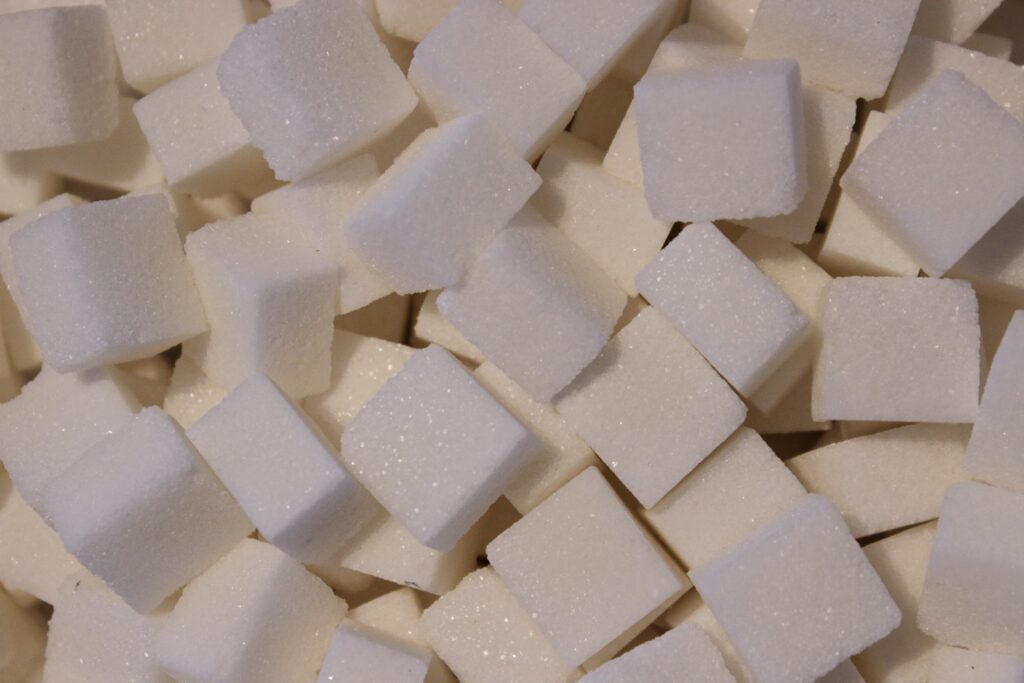

14.04.2023 – White sugar is soaring: The price has just reached its highest level since November 2011. The situation in India in particular is spurring the bulls. We take a look at the background.
Ahead of today’s expiration of the May contract, the price of sugar has risen to its highest level in more than a decade. John Stansfield, an analyst at DNEXT Intelligence, recently told Bloomberg news agency that the number of contracts expiring – that is, open interest – suggests 880,000 metric tons of supply and shorts “don’t have the physical sugar to tender.” Looking at the four-hour chart, the price is cents per pound. The recent setback is explained by speculation that Brazil may increase exports. More on this below.

Source: Bernstein Bank GmbH
The reasons for the long-term bull run: first, production in Thailand, Europe, China and Mexico is rather subdued. But the main reason for the bull run is in India.
Export rate in India
In India, for example, output is falling in the state of Maharashtra, Ashok Jain, president of the Bombay Sugar Merchants Association, told Reuters news agency. Maharashtra is likely to produce only 10.5 million metric tons in the 2022/23 season, which ends Sept. 30. Forecasts were previously at 13.7 million tons.
Because of the declining crop, India has imposed quotas that have largely been met and are not expected to be increased. India has allowed sugar mills to export only 6.1 million tons in the current season, down from 11 million tons previously. Meanwhile, the Indian Sugar Mills Association (ISMA) has already reported a decline in processing of around 3.3 percent for the October-March period.Refineries in India could therefore soon be dependent on imports – especially from Brazil. But: in Brazil, the real has recently appreciated against the dollar, which should boost domestic demand – and cap exports. Brazil is the world’s largest sugar exporter, ahead of India.
Competition with soy
Meanwhile, Karim Salamon, an analyst at Wilmar International, is skeptical about global output this season: “The cane and beet acreage is likely to fall in most areas due to the effects of crop competition.” Sugar has recently been competing more intensively with increased cultivation of soybeans, which has reduced arable land on the one hand. On the other hand, it has had an impact on transport capacity by rail and ship. Recently, “S&P Global Commodity Insights” also capped its estimate for global sugar oversupply in the 2022/23 season at 600,000 metric tons – in November, the publication had still assumed an increase of 5 million tons.
Our conclusion: Unless Brazil closes the Indian gap, the sugar price could continue to rise. Especially as summer is just around the corner and global demand for ice cream and soft drinks is rising. That’s because people want to party outside again after the Corona lockdowns – festivals are packed everywhere. In addition, the wedding season is upon us in India. However, a rainy summer in the West could spoil demand. Or higher export quotas from India could push prices down – so keep an eye on the real-time news! We are curious to see what happens next and wish you successful trades and investments!
_____________________________________________________________________________________________________________________________________________________________
The content of this publication is for general information purposes only. In this context, it is neither an individual investment recommendation or advice nor an offer to purchase or sell securities or other financial products. The content in question and all the information contained therein do not in any way replace individual investor- or investment-oriented advice. No reliable forecast or indication for the future is possible with respect to any presentation or information on the present or past performance of the relevant underlying assets. All information and data presented in this publication are based on reliable sources. However, Bernstein Bank does not guarantee that the information and data contained in this publication is up-to-date, correct and complete. Securities traded on the financial markets are subject to price fluctuations. A contract for difference (CFD) is also a financial instrument with leverage effect. Against this backdrop, CFD trading involves a high risk up to the point of total loss and may not be suitable for all investors. Therefore, make sure that you have fully understood all the correlating risks. If necessary, ask for independent advice. CFDs are complex instruments and are associated with the high risk of losing money quickly because of the leverage effect. 68% of retail investor accounts lose money trading CFD with this provider. You should consider whether you understand how CFD work and whether you can afford to take the high risk of losing your money.7
